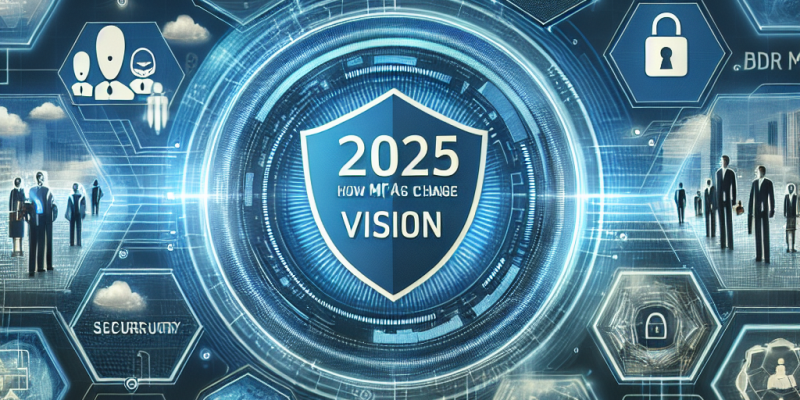2025 Vision: How MFA Will Change Cybersecurity Practices

As we look toward 2025, the landscape of cybersecurity is evolving rapidly. One of the most significant changes on the horizon is the rise of Multi-Factor Authentication (MFA). This method is already becoming a standard practice. However, by 2025, we expect MFA to reshape how organizations protect their sensitive information. In this article, we’ll explore how MFA will revolutionize cybersecurity practices in the coming years.
What is Multi-Factor Authentication?
MFA is a security process that requires users to provide two or more verification factors to gain access to an account. These factors can include something you know (like a password), something you have (like a smartphone), or something you are (like a fingerprint). By combining these elements, MFA adds an extra layer of security that makes it harder for unauthorized users to access systems or data.
Why MFA is Important
In recent years, cyberattacks have surged. Hackers are becoming more sophisticated, and traditional password protection is no longer enough. MFA helps to prevent unauthorized access even if a password is compromised. Studies show that organizations using MFA have a significantly lower risk of data breaches. By 2025, we anticipate that more companies will adopt MFA as a vital part of their security measures.
Trends in MFA for 2025
-
Biometric Authentication: By 2025, the use of biometric authentication, such as facial recognition or fingerprints, will become more common. These methods are not only convenient but also more secure because they rely on unique physical traits of the user.
-
Passwordless Techniques: The future of MFA may lean towards passwordless environments. This means using technology like one-time codes sent to mobile devices or email, or even technologies like FIDO (Fast Identity Online) that eliminate the need for a password altogether.
-
Adaptive Authentication: As MFA matures, we will see more systems implementing adaptive authentication. This system adjusts the security measures needed based on the user’s behavior. For example, if a user logs in from a new location, the system might require additional verification.
-
Integration with AI: Artificial Intelligence (AI) will play a significant role in MFA by 2025. AI can analyze user behavior to identify anomalies and potential threats. This capability will allow organizations to respond more quickly to suspicious activities.
-
Regulatory Changes: As digital security becomes more critical, governments may introduce new regulations mandating the use of MFA, particularly for sectors that handle sensitive data.
Challenges Ahead
Despite the benefits, transitioning to MFA isn’t without challenges. User resistance is a significant hurdle. Some individuals find MFA inconvenient, especially if they must remember multiple authentication methods. Organizations will need to invest in education and support to help users adapt to these new practices. Additionally, companies must ensure that their MFA systems are user-friendly to encourage widespread adoption.
Conclusion
Looking ahead to 2025, MFA is set to transform how organizations approach cybersecurity. By implementing multi-factor authentication, businesses can significantly enhance their security posture, reducing the risk of cyber threats. As technology continues to advance, staying ahead of potential risks will be essential. For everyone, from individuals to large corporations, embracing MFA will be a crucial step in safeguarding data in an increasingly digital world.














